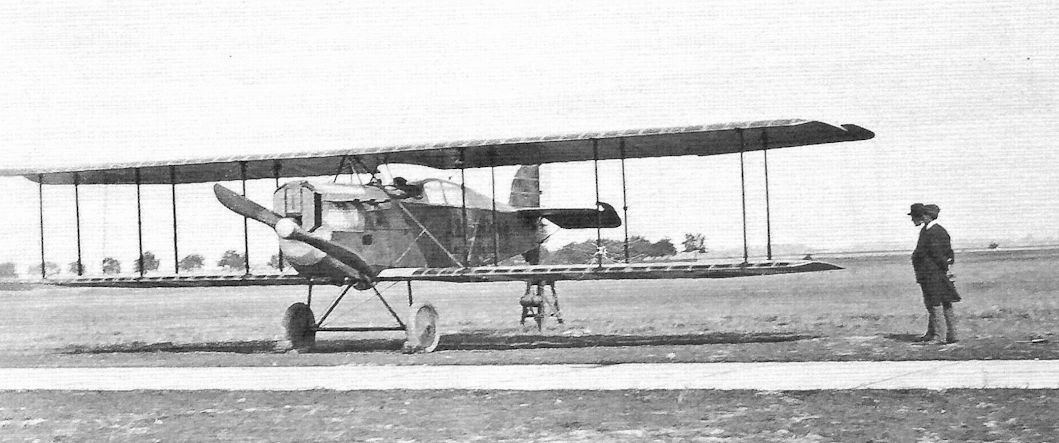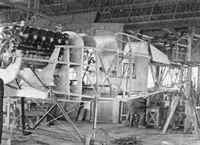
Описание
Страна: Германия
Год: 1919
Единственный экземпляр
J.Herris Aviatik Aircraft of WWI (A Centennial Perspective on Great War Airplanes 10)
Aviatik F.I
In September 1918 Idflieg defined a new aircraft class, "F", which stood for Fernaufklarerflugzeuge or long-range aerial reconnaissance aircraft. The classification was sent simultaneously to Rumpler, Halberstadt, L.V.G., Albatros, Aviatik, D.F.W., L.F.G. Roland, and Sablatnig, who were required to satisfy the following requirements:
• Maximum altitude (8,000 m)
• Speed at high altitude (160-170 km/h at 7,000 m, more than 140 km/h at 7,400 m)
• View for the pilot downward and to the sides, and the possibility to vertically see the ground
• Observer space only for photographic equipment.
• Parachute.
• Fuel tanks for 325 gallons of gasoline, either a tank with two separate chambers or a double-walled, bullet-resistant tank
• Wireless transmitter with heating
• Liquid oxygen for breathing at altitude
• A fixed forward-firing machine gun and a flexible machine gun in a rotating ring for the observer.
A number of engines were suggested, including the 350 hp Benz Bz.V V-12, the 350 hp Man V-10, the 260 hp Mercedes D.IVb, the 370 hp BMW V-12, and the 300 hp BuS.IVa six-cylinder. Examples of the Benz Bz.V V-12 were delivered in September. A Roland F.I to this requirement was ordered in September and delivered in December.
A competition between F-types similar to the fighter competitions started in September but the Armistice brought the competition to a halt.
The aircraft that was completed postwar as the Aviatik F Limousine for two passengers and mail was almost certainly the Aviatik F.I long-range reconnaissance design converted to a transport. The Aviatik F was a large, three-bay biplane that bore a marked resemblence to the Aviatik D.VII fighter. The fact that a Benz Bz.V V-12 was installed, one of the engine types recommended for the F-class, and the fact that the aircraft was completed in the first half of 1919 indicate that it was designed during 1918 for the F-class requirement. Furthermore, a photo of the aircraft under construction in the factory shows the rear cockpit ready for installation of a gun ring, while another photo of it outside the factory shows it now being built as a transport.
The Aviatik F was completed as a transport; whether it flew is not known for certain but is likely given that it was completed.
Aviatik F.I Specifications
Engine: 300 hp Benz Bz.V (V-12)
Wing: Span 15.0 m
General: Length 7.9 m
Height 3.1 m
Empty Weight 1,050 kg
Loaded Weight 1,615 kg
Maximum Speed (at 2,000m): 175 kmh
Climb: 5000m 35 min
Ceiling (absolute): 6,500 m
Endurance: 3 hours
Range: 525 km
Описание:
- J.Herris Aviatik Aircraft of WWI (A Centennial Perspective on Great War Airplanes 10)
- Журнал Flight
Фотографии
-
J.Herris - Aviatik Aircraft of WWI /Centennial Perspective/ (10)
The Aviatik F, completed postwar as a transport, was apparently converted during production from the Aviatik F.I designed in response to Idflieg's new "F" class long-range reconnaissance aircraft.
-
J.Herris - Aviatik Aircraft of WWI /Centennial Perspective/ (10)
An Aviatik F-type "Fernaufklarer" type after having been converted to a passenger aircraft. The engine fitted was a V-12 of more than 300 hp.
-
J.Herris - Aviatik Aircraft of WWI /Centennial Perspective/ (10)
The Aviatik F during postwar flight evaluation. There are no records of it having flown, but that is highly likely considering that it was completed. Use of a two-bladed instead of A four-bladed propeller seems unusual considering the 350 hp delivered by the Benz Bz.V V-12.
-
J.Herris - Aviatik Aircraft of WWI /Centennial Perspective/ (10)
Structure of the Aviatik F during completion as a Limousine carrying two passengers.
-
J.Herris - Aviatik Aircraft of WWI /Centennial Perspective/ (10)
The Aviatik F during construction as an F.I.
-
J.Herris - Aviatik Aircraft of WWI /Centennial Perspective/ (10)
An artist's rendering of the Aviatik F. Limousine.






